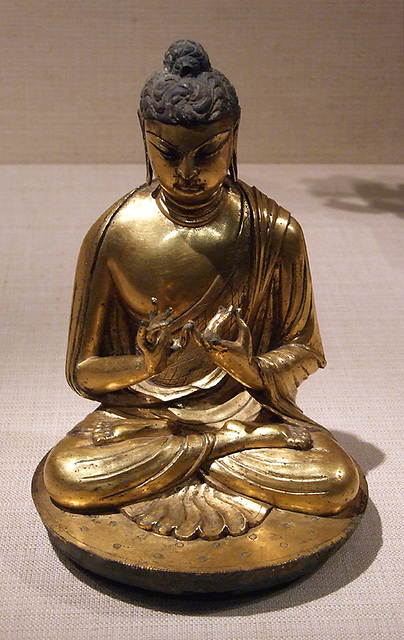Tang Horse and Rider in the Metropolitan Museum of…
Standing Court Lady in the Metropolitan Museum of…
Standing Buddha in the Metropolitan Museum of Art,…
Female Attendant Carrying a Pillow in the Metropol…
Lovers in the Metropolitan Museum of Art, December…
Majolica Jar in the Metropolitan Museum of Art, De…
Araballo with the Arms of the Hospital of Santa Ma…
Glass Relief Fragment in the Metropolitan Museum o…
Bronze Finial with the Head of Medusa in the Metro…
Glass Relief Fragment in the Metropolitan Museum o…
Bronze Cheekpiece of a Helmet in the Metropolitan…
Terracotta Lamp with Victory in the Metropolitan M…
Sardonyx Cameo with Aurora in a Chariot in the Met…
Sardonyx Cameo with a Bacchic Group in the Metropo…
Saint Bavo in the Metropolitan Museum of Art, June…
Detail of Saint Bavo in the Metropolitan Museum of…
Sofa in the Metropolitan Museum of Art, June 2009
Armchair in the Metropolitan Museum of Art, June 2…
Indian Girl by Erastus Dow Palmer in the Metropoli…
Detail of Indian Girl by Erastus Dow Palmer in the…
Detail of Indian Girl by Erastus Dow Palmer in the…
Virgin and Child with Bird in the Metropolitan Mus…
Marble Grave Stele of a Young Woman in the Metropo…
Buddhist Guardian Figure in the Metropolitan Museu…
Female Dancer in the Metropolitan Museum of Art, S…
Ivory Panel with Christ's Entry into Jerusalem in…
Detail of Lotus Flowers on the Temple of Dendur in…
Detail of a Snake with a Crown on the Temple of De…
Detail of 19th Century Graffitti on the Temple of…
Sphinx of Hatshepsut in the Metropolitan Museum of…
Crocodile in the Metropolitan Museum of Art, June…
Sphinx of Hatshepsut in the Metropolitan Museum of…
Marble Relief Fragment with Combatant Animals in t…
Rip Van Winkle Returned in the Metropolitan Museum…
Detail of the Versailles Panorama in the Metropoli…
Buddha, Probably Vairochana in the Metropolitan Mu…
Limestone Ossuary with Lid in the Metropolitan Mus…
Terracotta Statuette of a Woman in the Metropolita…
Terracotta Statuette of a Dancing Woman in the Met…
Terracotta Lekythos Attributed to the Pharos Paint…
Roman Terracotta Antefix in the Metropolitan Museu…
Terracotta Pomegranete in the Metropolitan Museum…
Terracotta Kylix Attributed to the Painter of New…
Detail of a Kylix Attributed to Makron in the Met…
Kylix Attributed to Makron in the Metropolitan Mu…
Location
See also...
Keywords
Authorizations, license
-
Visible by: Everyone -
All rights reserved
-
442 visits
Buddha, Possibly Vairochana in the Metropolitan Museum of Art, September 2008


Seated Buddha, Tang dynasty (618–907), early 8th century
China
Gilt bronze
H. 8 in. (20.3 cm)
Rogers Fund, 1943 (43.24.3)
This striking example of a seated Buddha has the broad shoulders, narrow waist, full and slightly pursed lips, and arched eyebrows characteristic of Chinese Buddhist figures made during the later Tang dynasty. The quality of workmanship, furthermore, suggests that it was probably produced in an urban area, possibly the capital city of Chang'an.
This seated figure performs a graceful variation of the dharmachakra mudra or hand gesture indicating teaching (literally, turning or setting in motion the Wheel [of Buddhist law]). Because Shakyamuni spent more than forty years traveling and lecturing after his enlightenment, this figure could be a representation of the Historical Buddha. He also bears other corporeal markings of enlightened beings: the cranial protuberance (ushnisha) indicating wisdom, elongated earlobes referring to Shakyamuni's royal heritage but without the earrings that he put aside when he chose a spiritual path, and the three neck rings signifying auspiciousness. These physical signs, as well as the flowing monastic robes, derive from Indian prototypes but spread throughout the Buddhist world.
Text from: www.metmuseum.org/toah/hd/buda/ho_43.24.3.htm
China
Gilt bronze
H. 8 in. (20.3 cm)
Rogers Fund, 1943 (43.24.3)
This striking example of a seated Buddha has the broad shoulders, narrow waist, full and slightly pursed lips, and arched eyebrows characteristic of Chinese Buddhist figures made during the later Tang dynasty. The quality of workmanship, furthermore, suggests that it was probably produced in an urban area, possibly the capital city of Chang'an.
This seated figure performs a graceful variation of the dharmachakra mudra or hand gesture indicating teaching (literally, turning or setting in motion the Wheel [of Buddhist law]). Because Shakyamuni spent more than forty years traveling and lecturing after his enlightenment, this figure could be a representation of the Historical Buddha. He also bears other corporeal markings of enlightened beings: the cranial protuberance (ushnisha) indicating wisdom, elongated earlobes referring to Shakyamuni's royal heritage but without the earrings that he put aside when he chose a spiritual path, and the three neck rings signifying auspiciousness. These physical signs, as well as the flowing monastic robes, derive from Indian prototypes but spread throughout the Buddhist world.
Text from: www.metmuseum.org/toah/hd/buda/ho_43.24.3.htm
- Keyboard shortcuts:
Jump to top
RSS feed- Latest comments - Subscribe to the comment feeds of this photo
- ipernity © 2007-2024
- Help & Contact
|
Club news
|
About ipernity
|
History |
ipernity Club & Prices |
Guide of good conduct
Donate | Group guidelines | Privacy policy | Terms of use | Statutes | In memoria -
Facebook
Twitter

Sign-in to write a comment.